HAIR


















Ruby (Pt. I and II)
Red Human Hair Embroidery on Great-Great Grandmother’s Table Cloth, 14 3/4 x 14 1/2”
For Christmas last year, my grandmother gave me a set of napkins that she had cut from her grandmother’s table cloth. This was the “fancy” table cloth. One where, as a child she had run past daringly on her way through the formal dining room while playing with her cousins. The table cloth you could only eat on if the preacher came for Sunday lunch or there was a very special occasion. What a joy it was to sit with my grandmother and hear her favorite memories of her grandmother — someone who had loved her deeply when unimaginable loss and heartache came into her life at a young age. Ruby was my great-great grandmother’s name. There’s a lineage of women that came before me who were fierce. They were and are makers, gardeners, deep feelers, fighters. It feels like a privilege to, in a way, be gathered around this table cloth with them.


Tornado Scar
Human Hair Embroidery on Petticoat
20 ¾ x 20 ¾ in Framed
In 2011, a tornado destroyed my family home. In its aftermath, our clothing was scattered, caught in tree branches, and embedded in the earth. That memory lingers in this piece: the ripped white fabric, marked by age and wear, is mended not with thread, but with hair, a material both fragile and deeply personal. While the fabric bears a visible rip, it has been repaired, not erased.
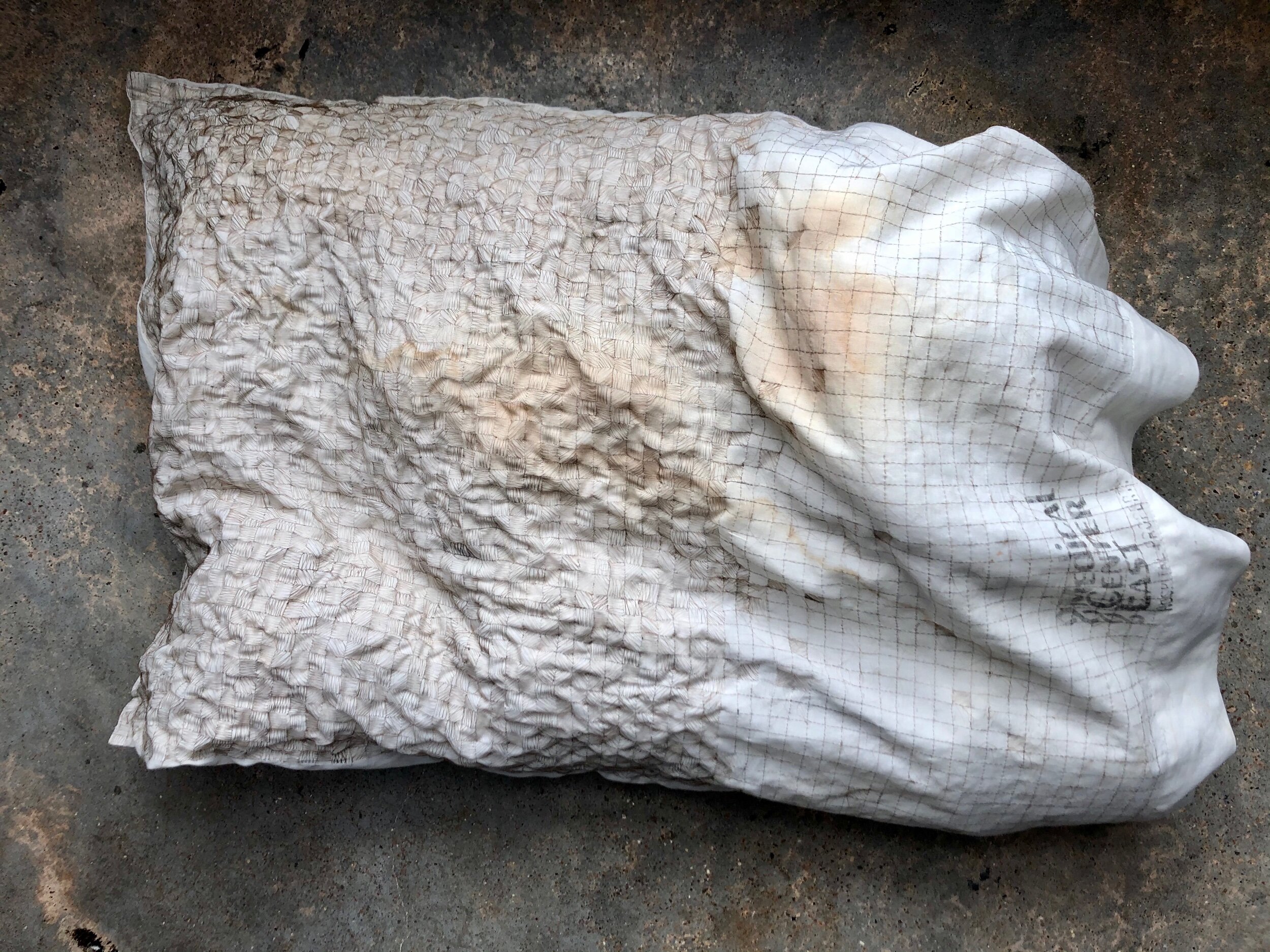

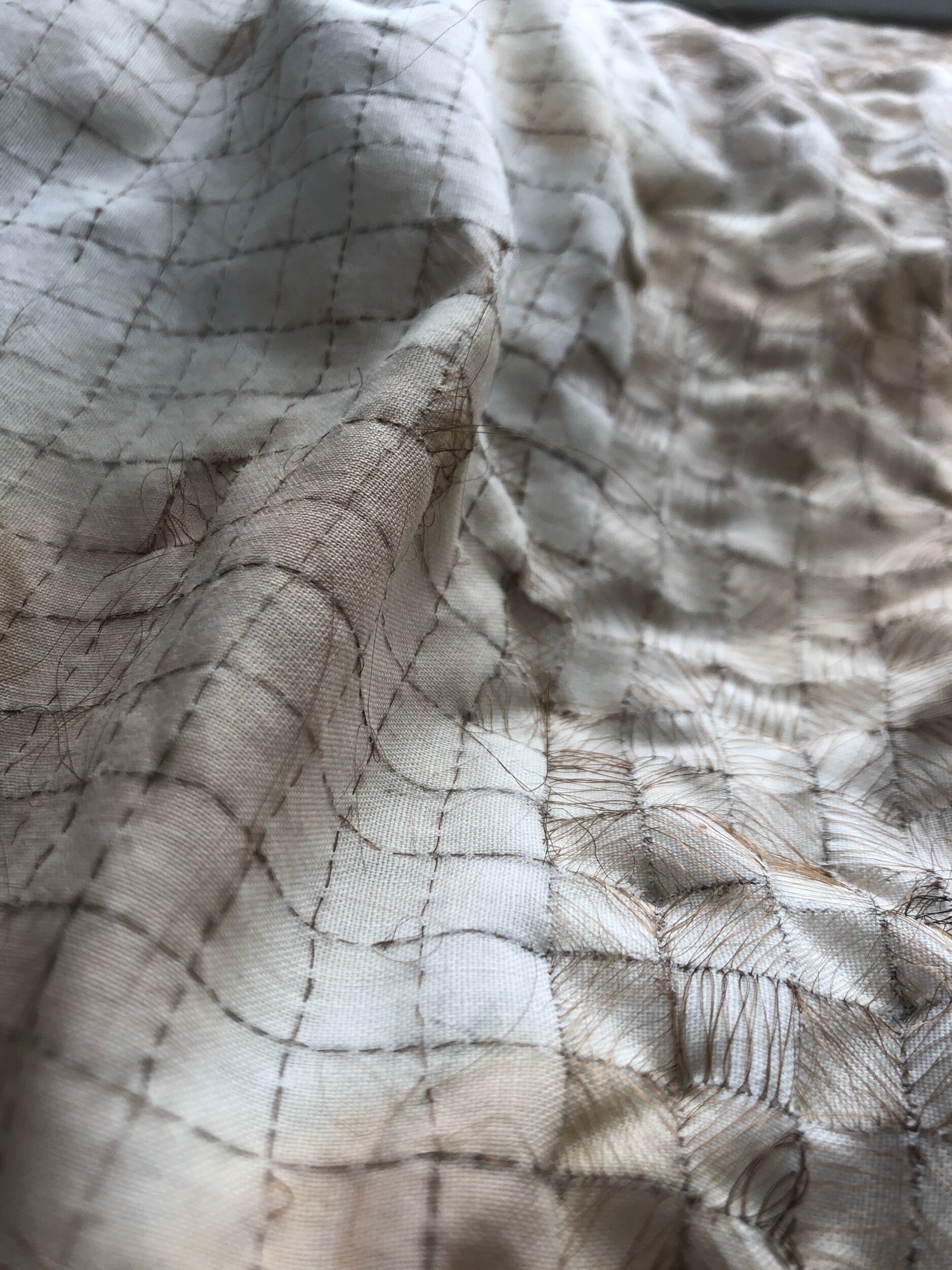
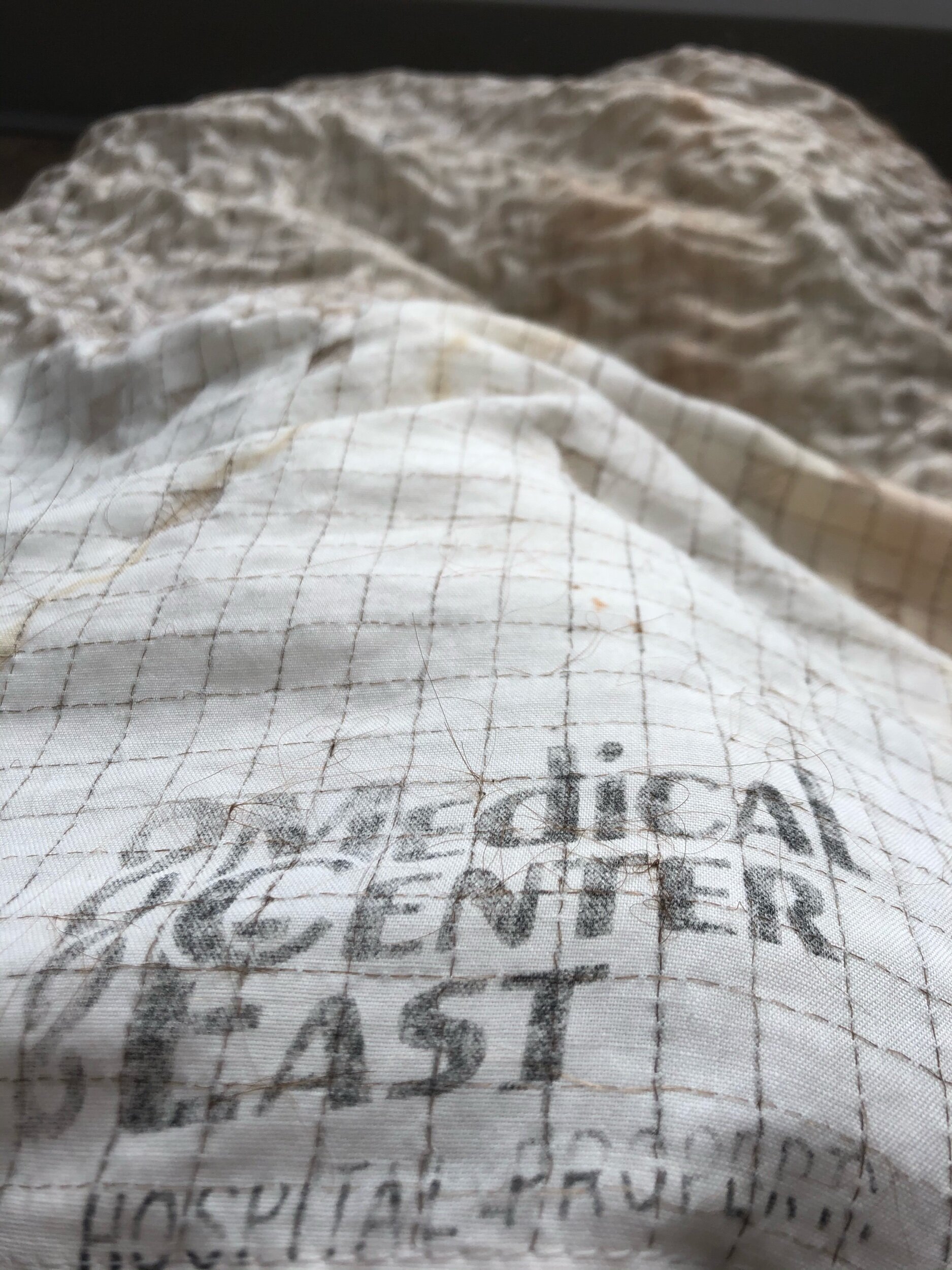
Hospital Property
Human hair on used pillowcase.
During my time in Houston, many people who are receiving treatments from the nearby Cancer Research hospital, MD Anderson, have wandered into my studio. Several of these encounters have been ones in which people have shared stories of heartache, or how they just “needed a good day and came to see some art, without the kids, for the first time in a long time,” or how they packed up everything just to get treatment from this place. They’re moments of deep sorrow, half-smiles, and gratefulness for those caring for them. A lot of these conversations started when they noticed my previous hair embroideries. Many have had to say goodbye to their hair.
I’m grateful for the people who have been willing to share with me. Though nothing I do or say can make these things right, or make up for what is lost, it’s my hope that through materials and a willingness to listen that people will continue to share stories and feel heard even in the hardest moments.
In 2018, someone gave me this stained pillowcase, stamped “Hospital Property,” and now it is embroidered with a grid of hair. As a whole it creates a landscape, undulating. From right to left it fades to an outline— a reminder of what once was. From left to right it grows— moving from an outline, one of many, to the hope of a new growth.









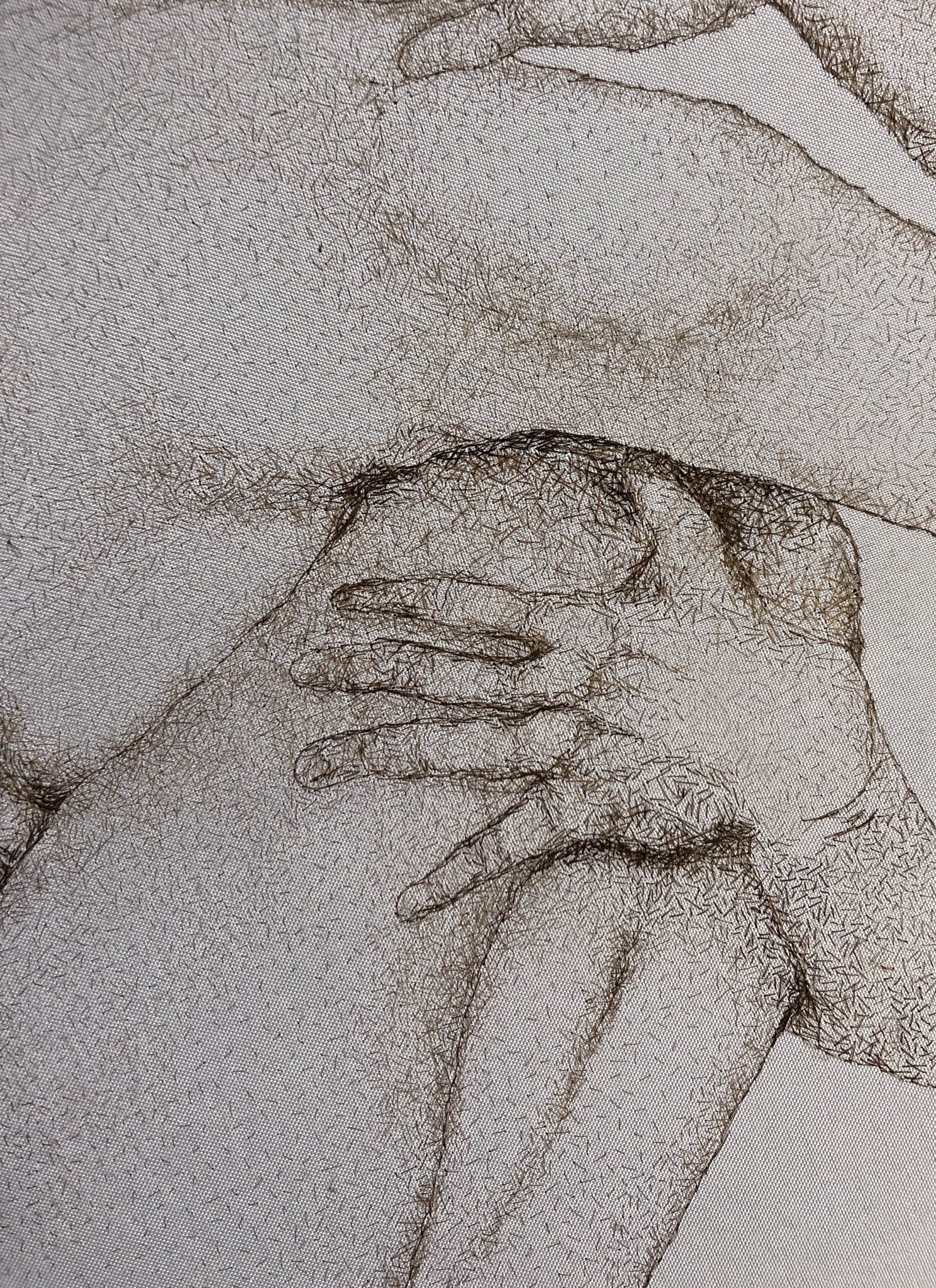

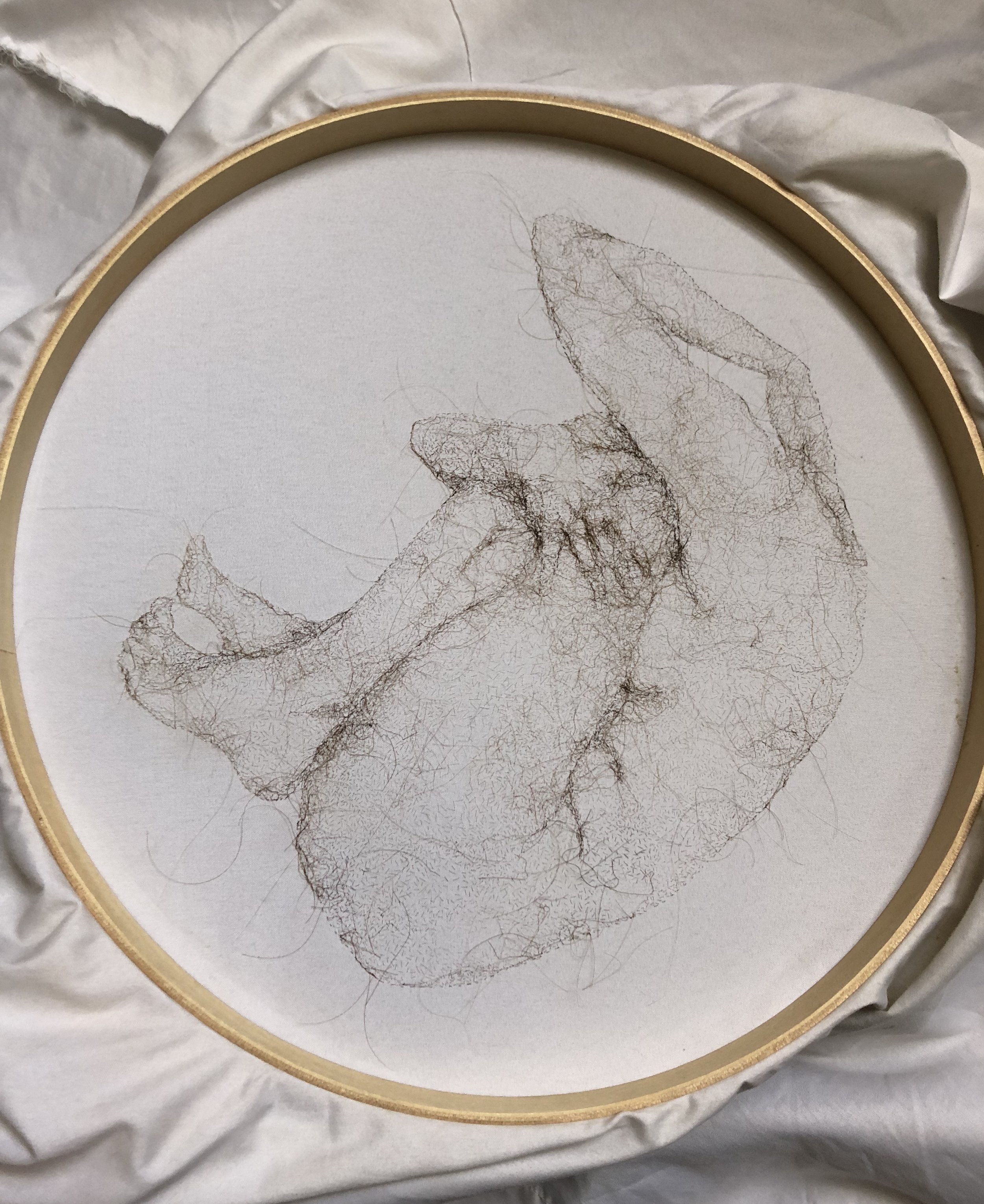
Hirsute
14” Diameter, Hand embroidered human hair on pillowcase.
Inspired by Victorian era hair wreaths and the desire/repulsion narrative, this piece asks the viewer to engage with a figure that is anything but expected. 118 hours and countless careful stitches. --- Inspired by the work of contemporary artists such as Lynne Yamamoto and vernacular practices such as Victorian era hair wreaths, this embroidery asks the viewer to consider their delightful and the disgusting experiences with hair. Though a seemingly mundane medium, this piece is unexpected and bodily once it is realized that hair, rather than thread, has been used.




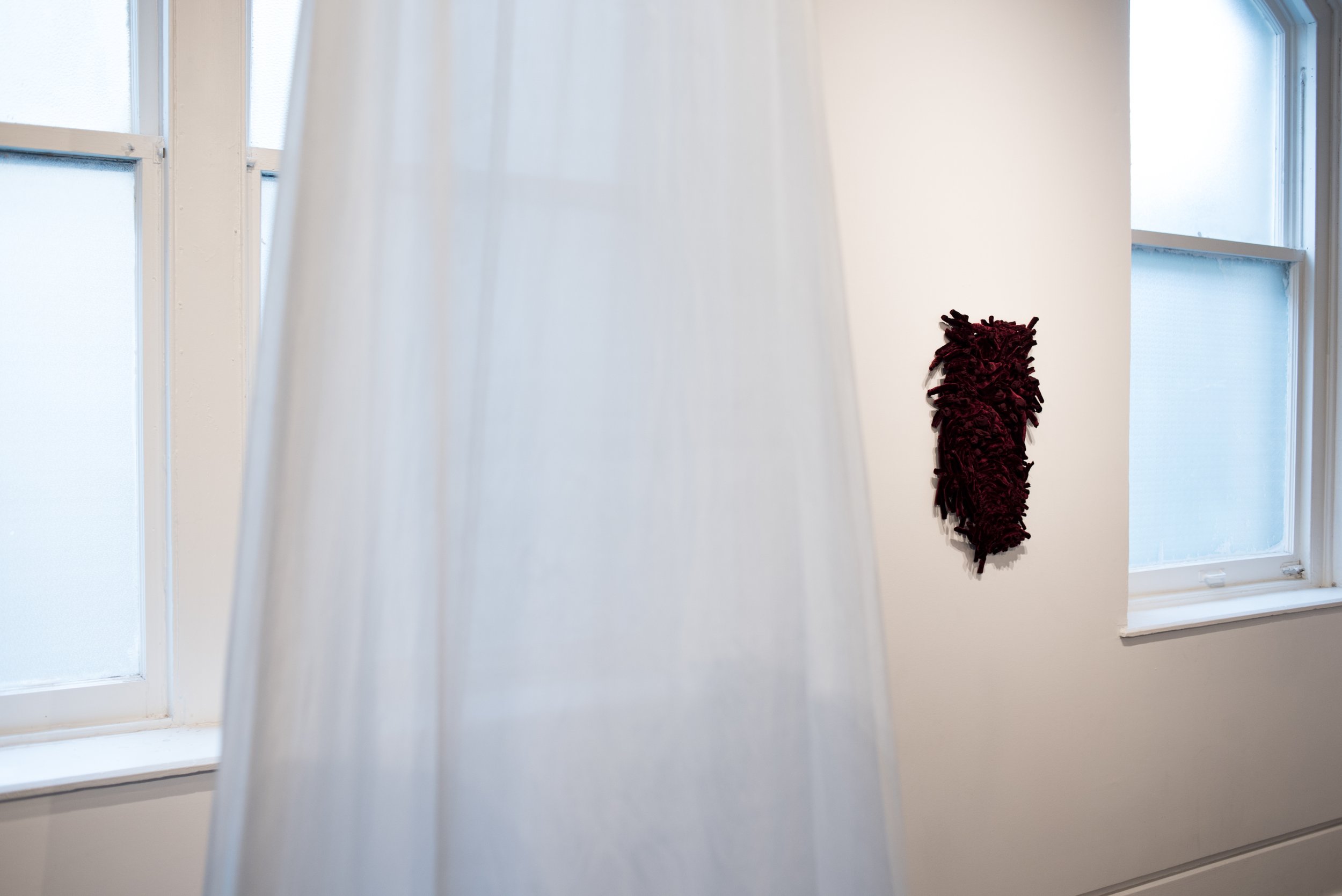


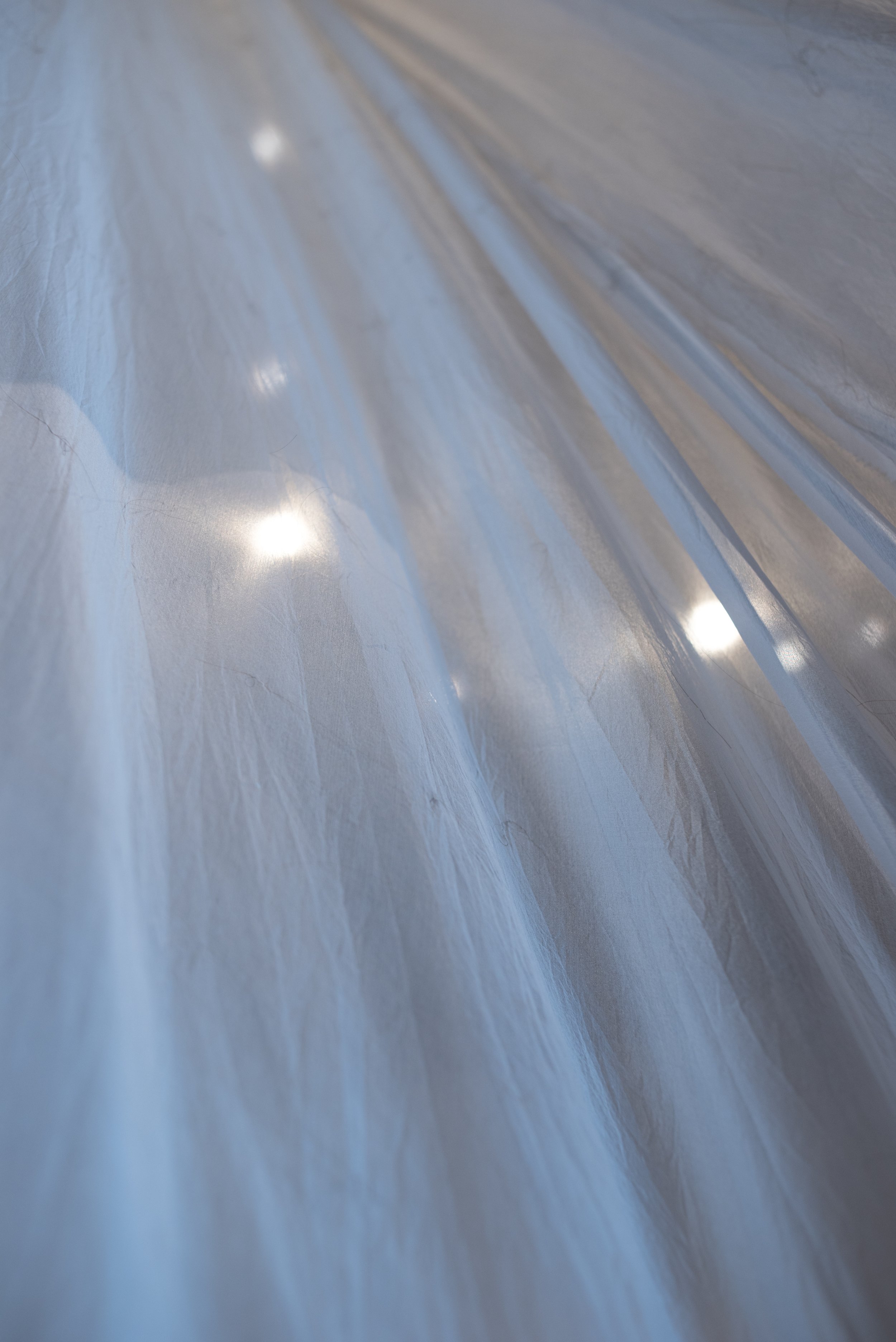



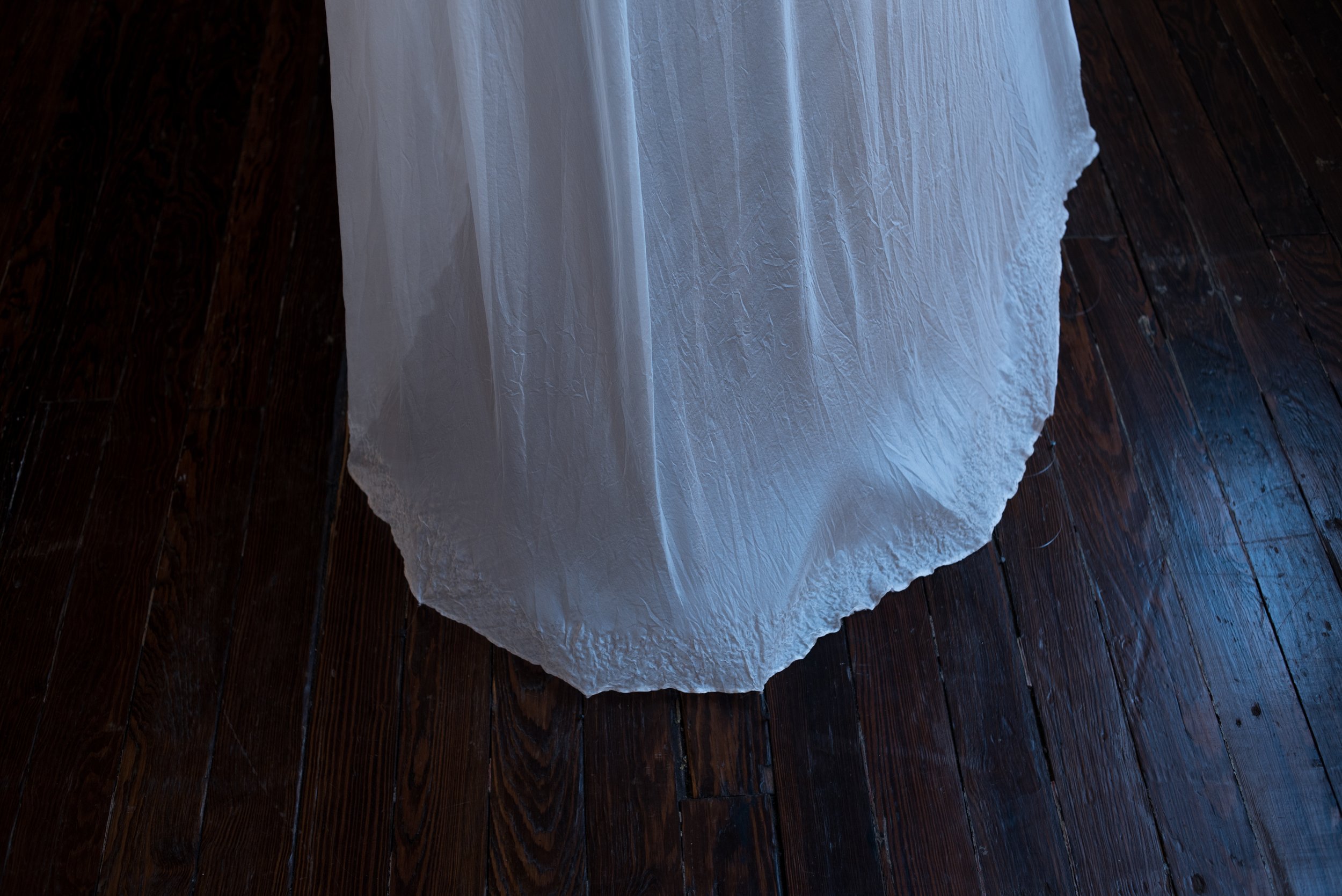
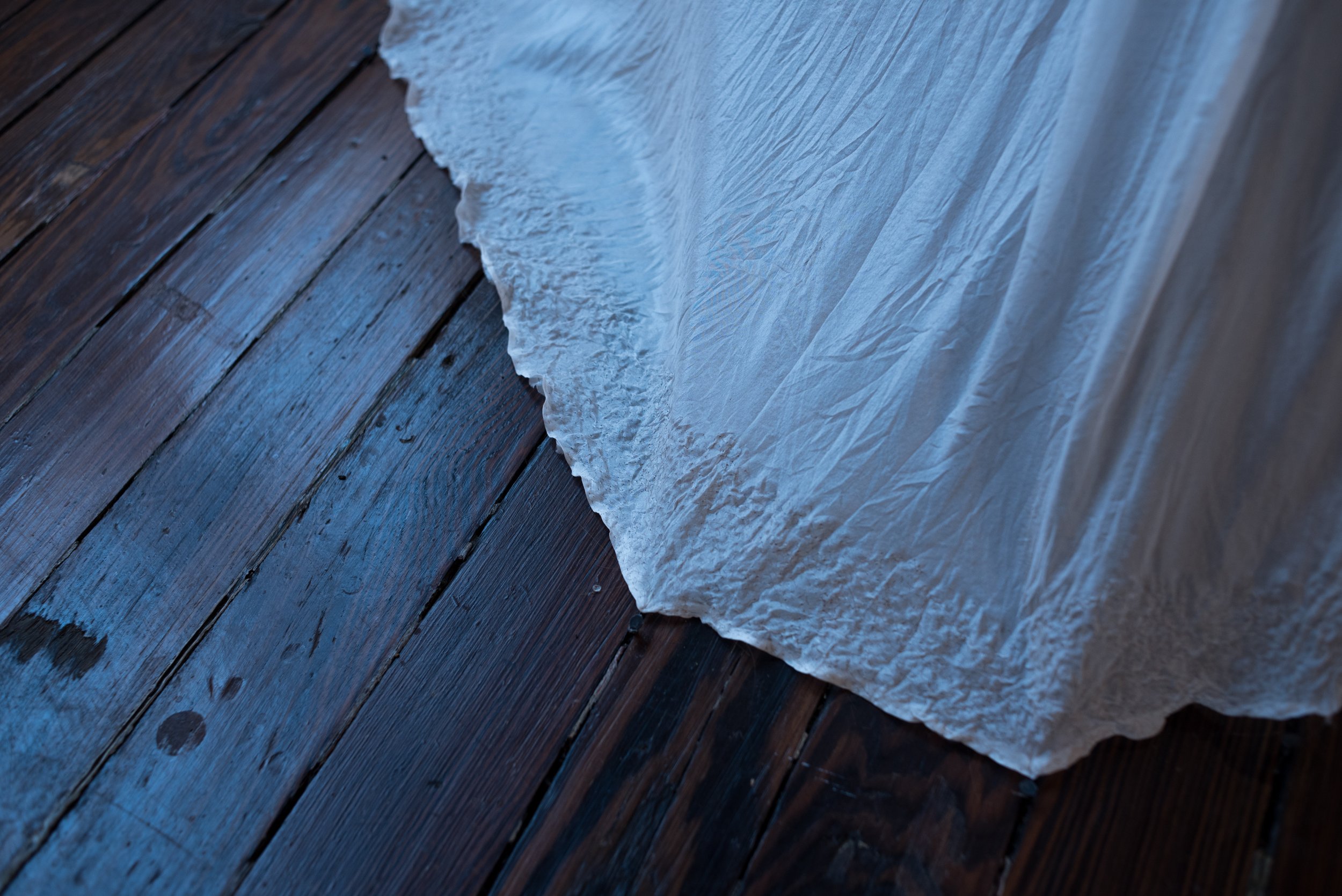
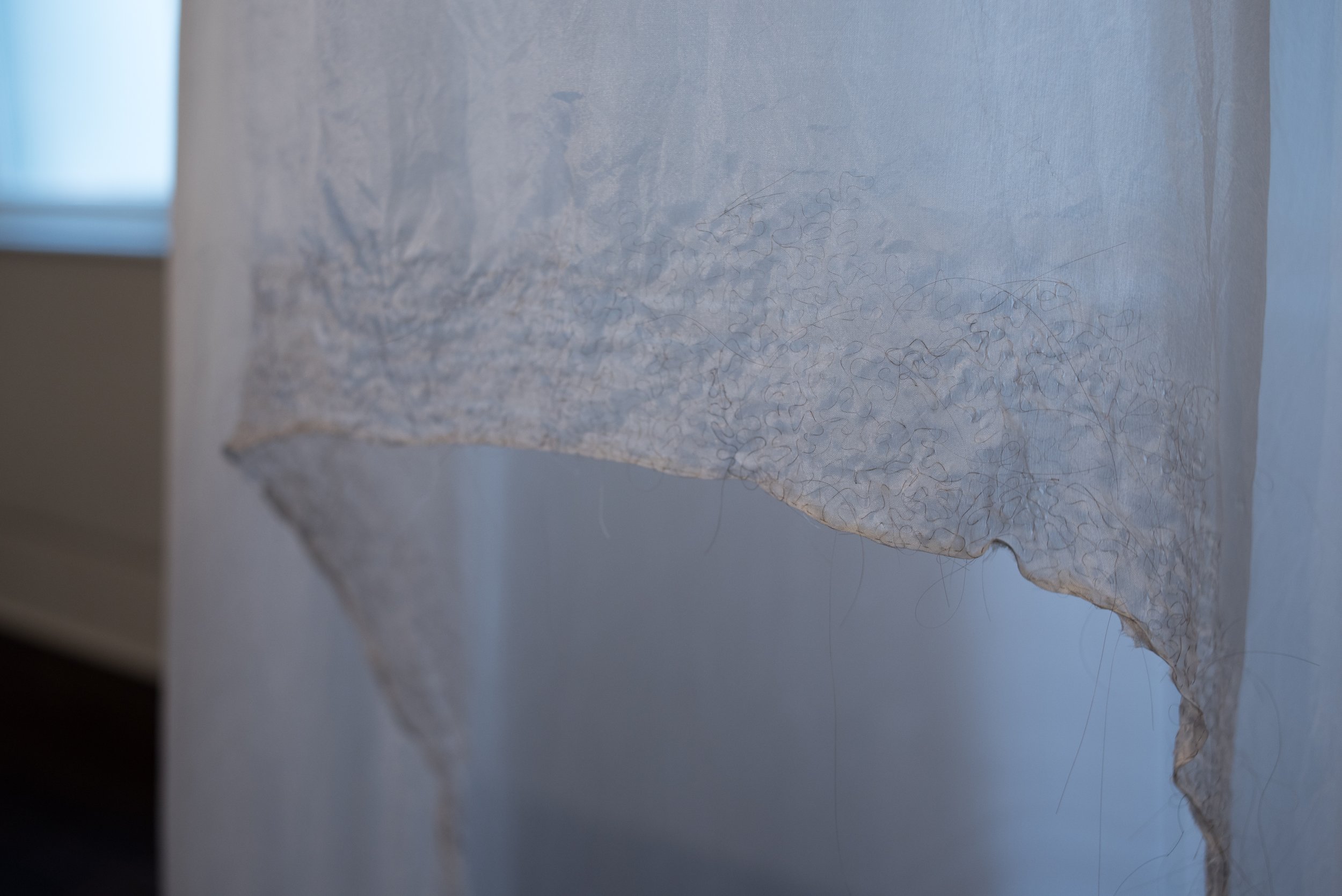
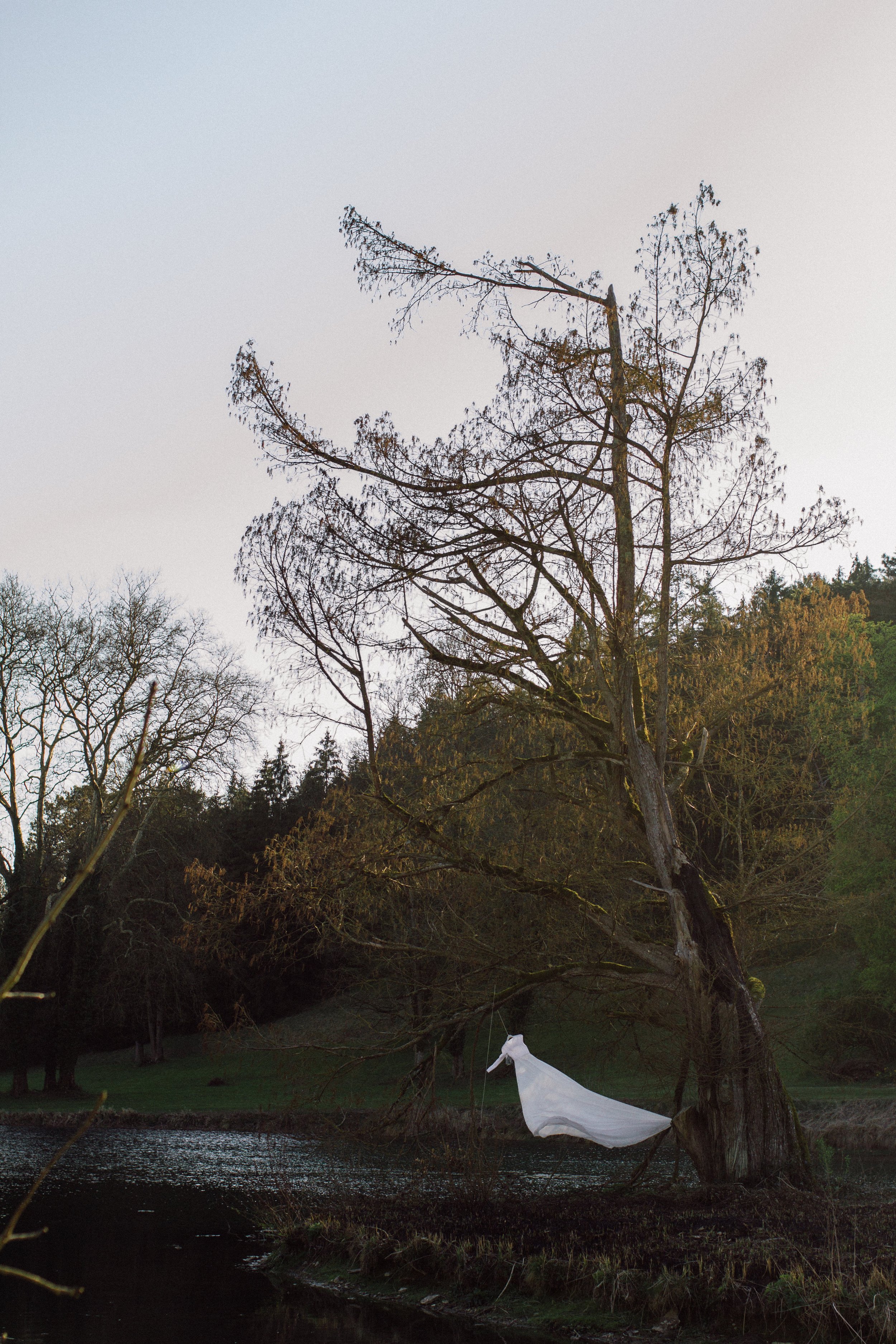
The Dress, Taboo Specter
Human Hair on Silk Dress, Approximately 9' tall
Though at first glance this dress appears to be a ghostly heirloom, it is anything but what you anticipate. The dress becomes a body of its own, swaying gently as the viewer stands beneath it and witnesses the interior. It feels disorienting as the beauty of the outside beckons you closer, and then changes entirely as the inside is not that of expected pristine silk but of intense humanness. To say the least, this dress is taboo. Looking up someone’s skirt is an action that violates, and body hair, though we all have experiences with it, is something that is often unwanted or left out of “polite” conversation. This stark contrast is similar to our experience as humans in relationship with others – we are told a narrative of perfection and are often caught off guard when things are unkempt.
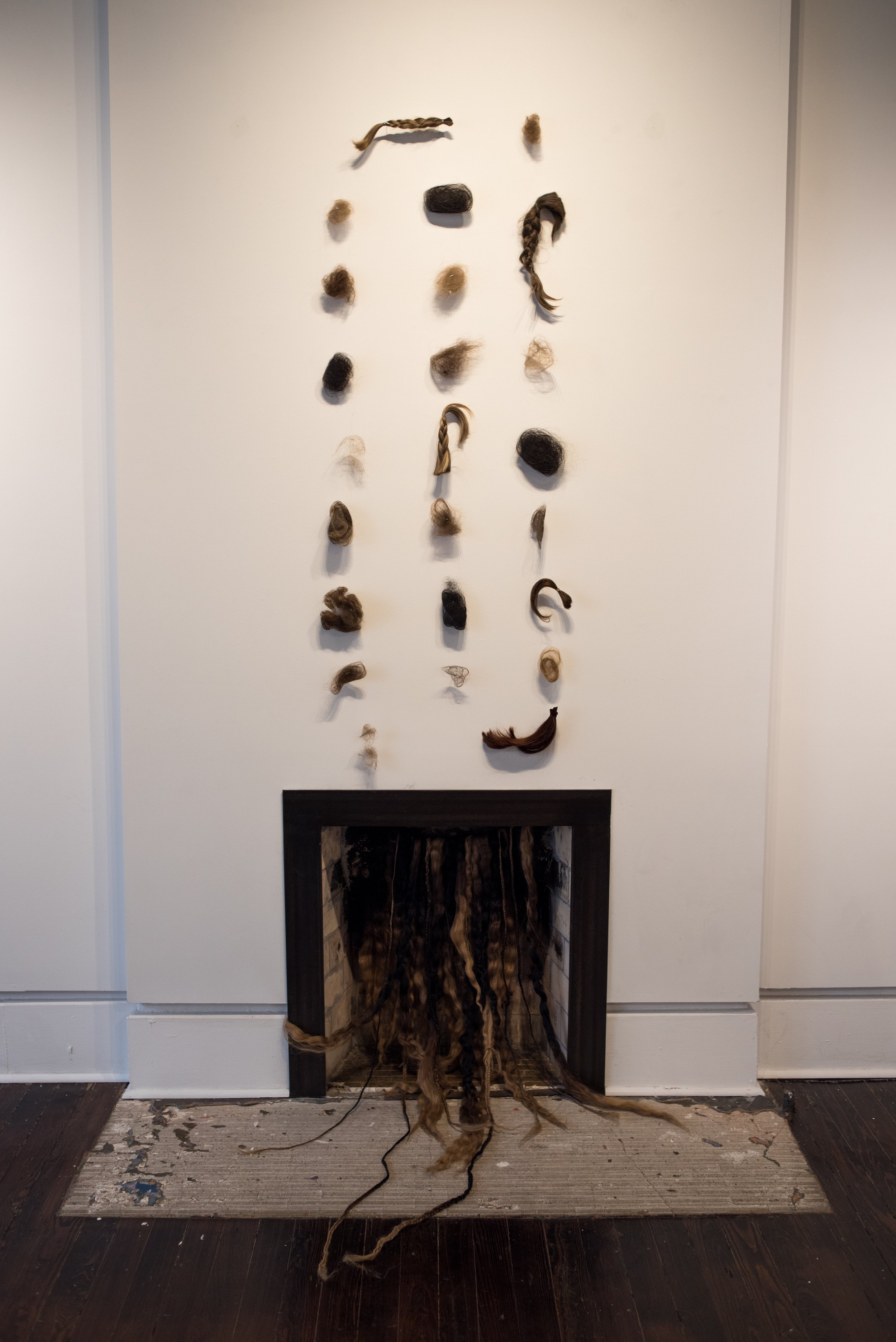


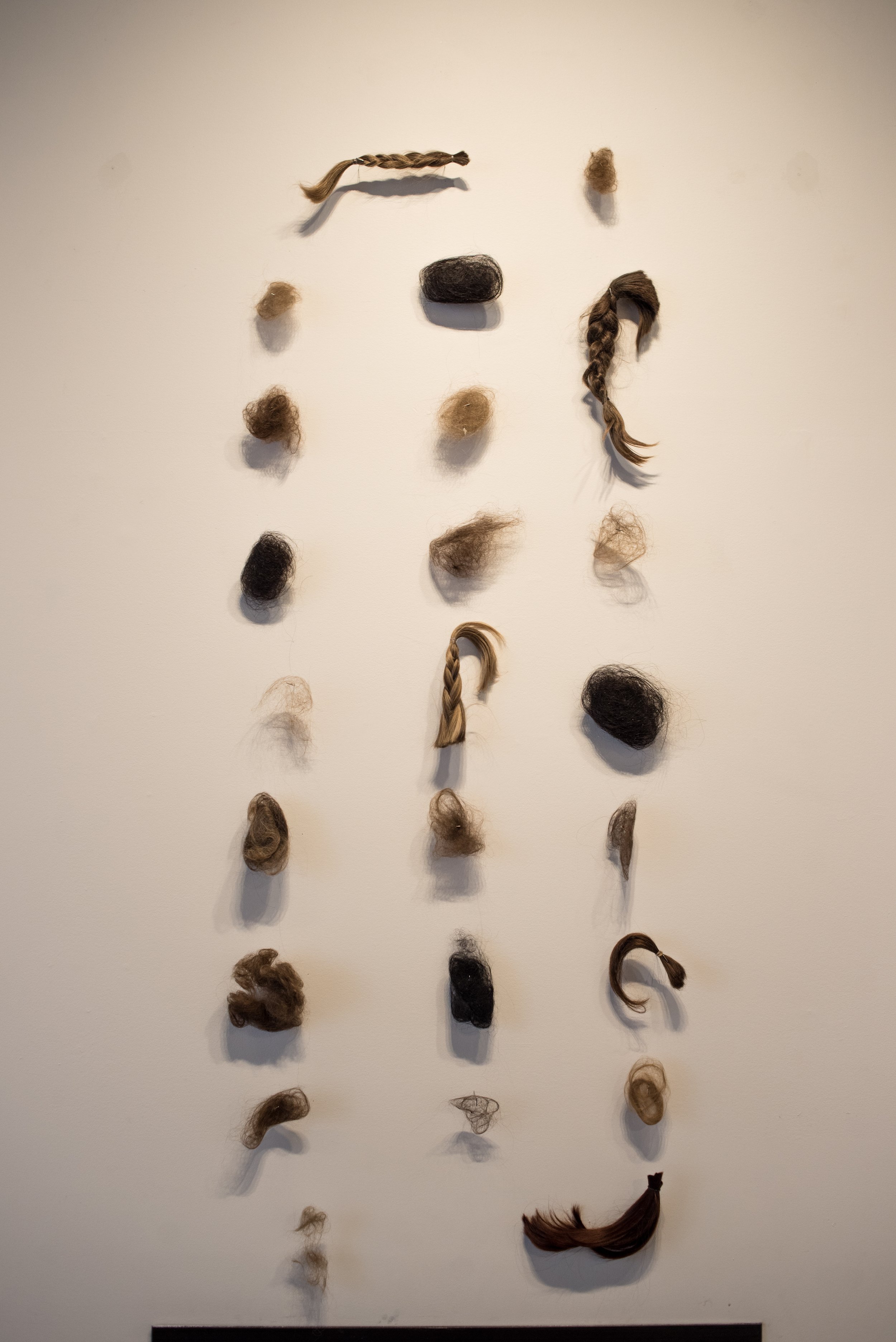



Hair
144” x 36”
This collection is composed of the hair of many people whom I dearly love. It is strangely scientific, intensely personal, and unsettling. You, as the viewer, do not know the story behind each piece. Are they shaved heads due to cancer? A whim that lead to a pixie cut? They are specific, and quiet, and yet they simultaneously draw you in, and repulse you. Not only is each lock or tangle of hair pinned to the wall like some once-living thing, but it is also spilling forth from the mouth of the fireplace, locks of hair reaching beyond the confines of the wall and into your home.

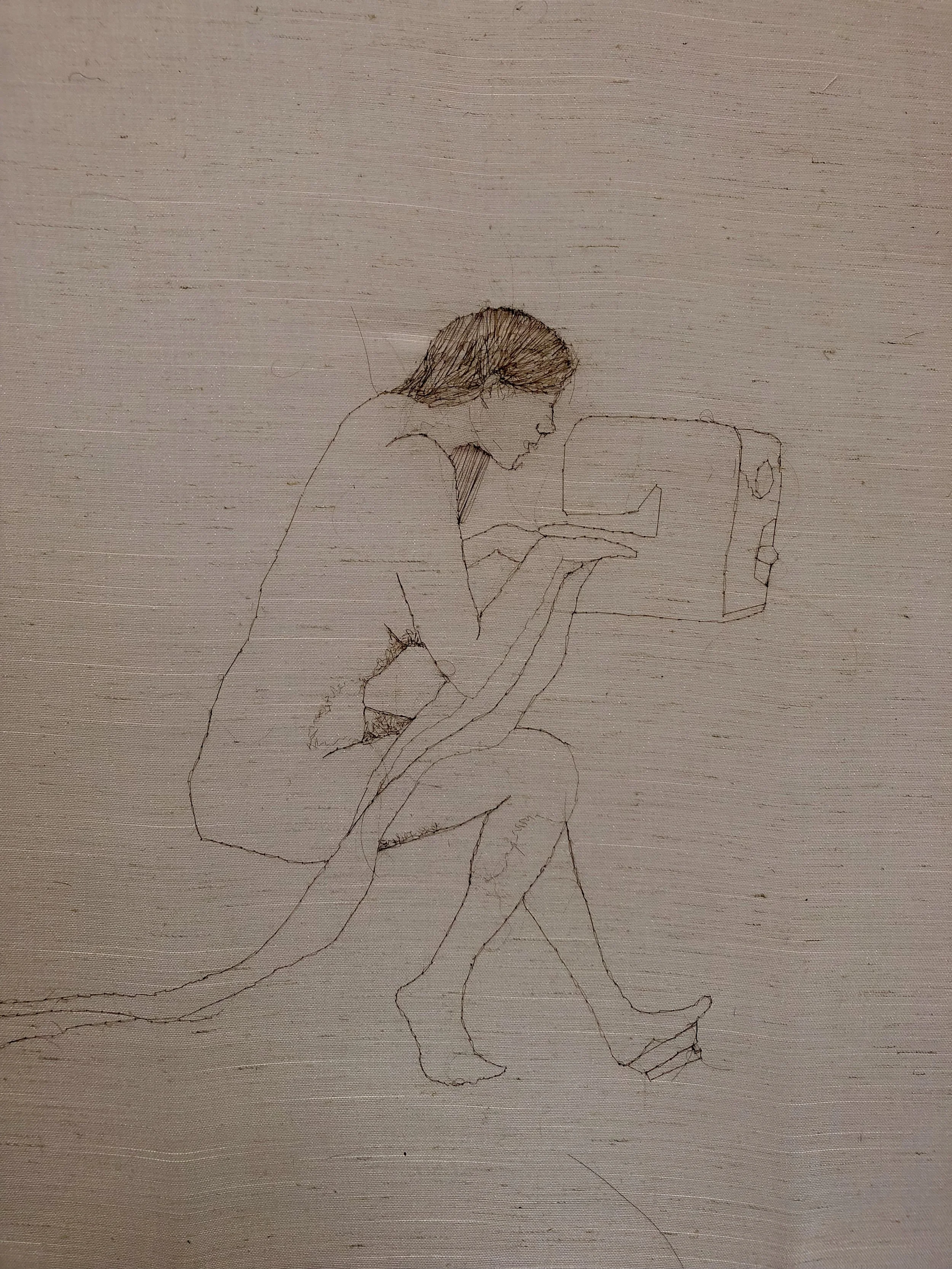










Tiger Stripes
Human Hair on Curtain
Stretched like a strange skin, semi-transparent pink fabric is tied to a picture frame with human hair. Within the confines of the pink skin are two figures that are seemingly the same person, working tirelessly to cut away and re-assemble their body. The transparency of this piece is uncomfortable, the curtain belongs in a house, and yet see-through curtains are helpful only as decoration, thus it can never again serve its original purpose. It is easy as humans to obsess over the way we present ourselves— we try new fashions, we work out, we mourn the things we do not appreciate, and this practice seemingly lasts our entire lives. It is curious to note, too, that women are often criticized for their bodies, asked to reinvent and deconstruct themselves, and often seen as useful only in the decorative sense.


























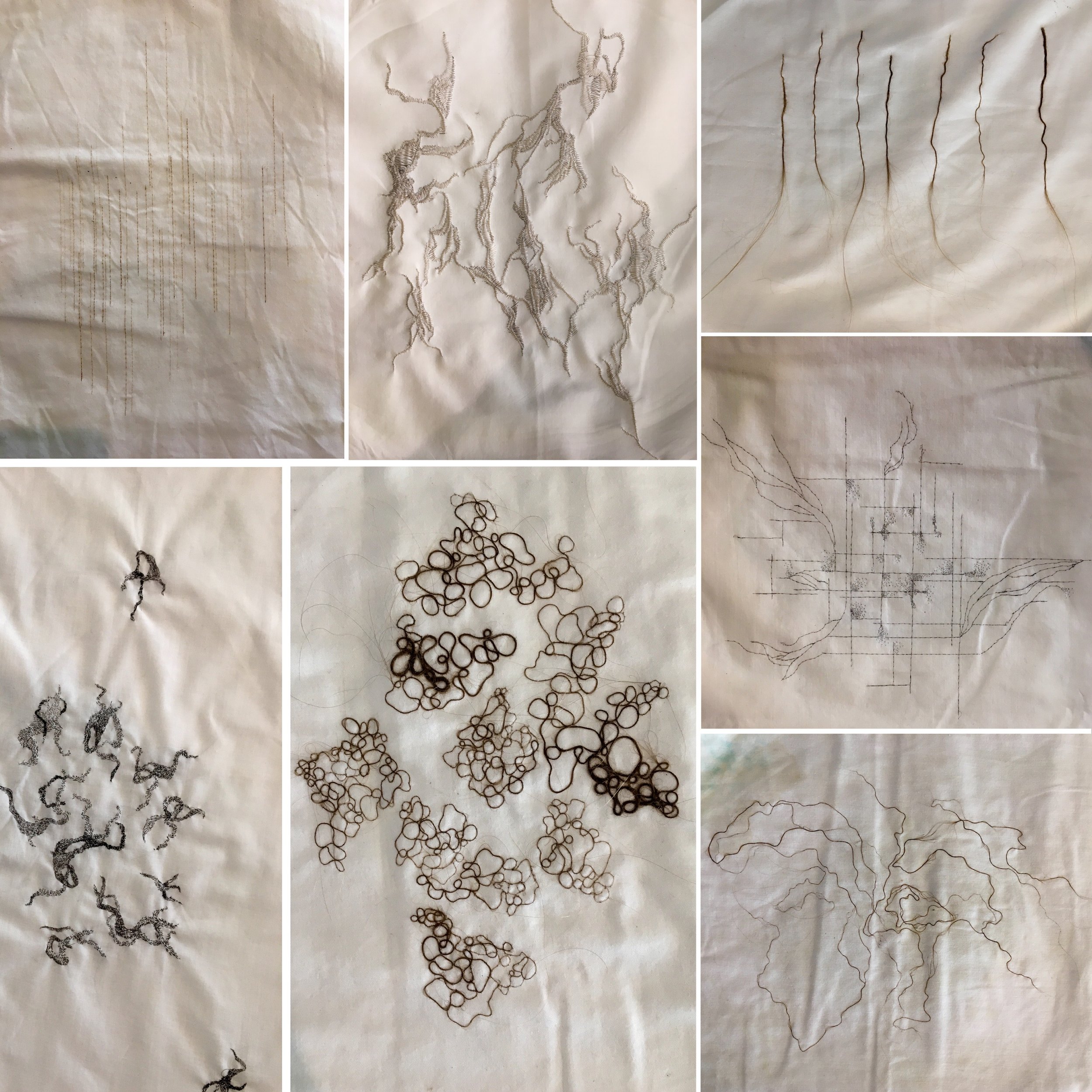



Vilomah (against the natural order)
Used pillowcase, human hair, liquid starch, fishing line
Cascades of used pillowcases tumble to the floor. They hang, bodily, swaying gently as you walk by. The pillows are frozen in time, moving from clean to dirty, beautiful to repulsive, bearing traces of the people who left them behind.
By using two seemingly mundane yet personal mediums, this installation is rooted in common experience and art history. Many of us have felt the effects of loss, laid our head on a pillowcase for much of our life, and have experienced hair in some delightful or disgusting way. The pursuit of visual elegies has been present throughout art history from Giotto’s Lamentation during the Italian Renaissance, to vernacular practices such as Victorian era hair wreaths, and continued in contemporary artwork like Wrung by Lynne Yamamoto. Though very different, these pieces all share a common language of grief and loss, and generously allow the viewer to enter into a story that may not have previously been their own.
Growing from the belief that art can act as material lament, Vilomah provides a space in which those who are no longer present are remembered as waves of human traces engulf you.
Each column in this installation contains one pillow that is embroidered with hair, creating a nonrepresentational portrait of a loved one, asking you to consider the human absence that is eerily felt. The thirty hours that it took to complete each portrait provided space for prayer and meditation over the person suffering, or the families left behind. Though these pieces do not fill the absences, they act as an amplifier to cry out on another’s behalf.




